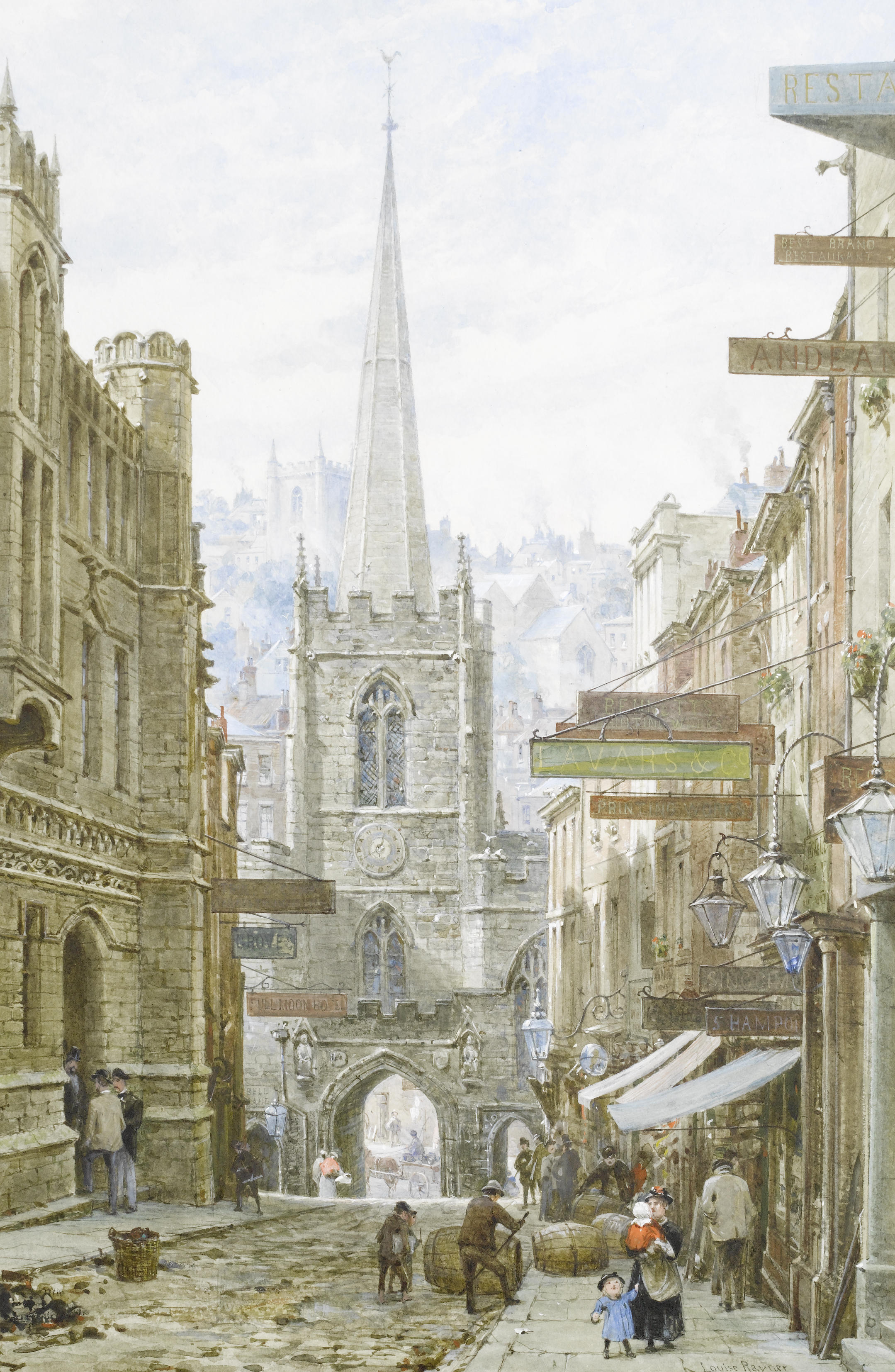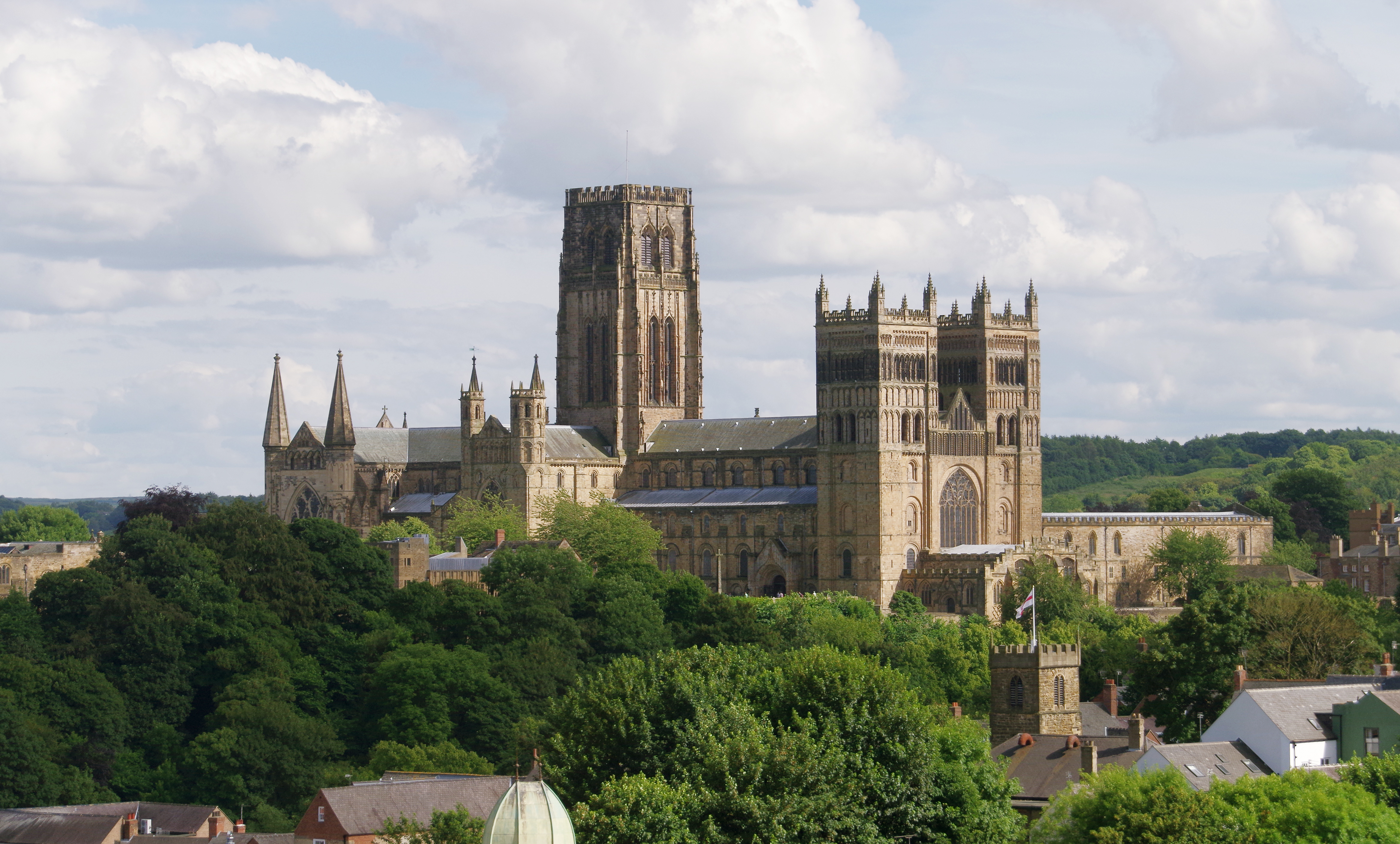1. Introduction
 |
| Broad Street, Bristol Watercolour Louise J. Rayner (1832 - 1924) |
It was the Victorian age. The city was Bristol. The new age commerce was getting hold of people’s activities.
In the middle of the day, in Victorian England, in the city of Bristol, there stood a girl of fifteen. She had work to do. She had pencils and a notebook in her hands. What was she doing in the middle of a sunny day? She was taking sketches of the road and buildings and the people who were running across the broad road of Bristol.
The girl was a painter. A watercolour painter of nineteenth-century of Britain. Her name was Louise Ingram Rayner (1832 –1924). If you are born into a family which is full of artists, you would certainly become an artist. So did Louise. She was surrounded by artist parents and artist siblings.
2. Artistic Context & Historical Significance
Louise Ingram Rayner was among the leading British women artists of the Victorian era, celebrated for her richly detailed watercolour depictions of British townscapes. Her works not only demonstrate technical mastery but also evoke nostalgia—a testament to her skill and vision at a time when female artists had limited opportunities.
Rayner exhibited widely—at institutions like the Royal Academy and the Royal Watercolour Society—and stood alongside other trailblazing women artists who began gaining recognition despite societal constraints . Her legacy thrives in both public collections (Grosvenor Museum, Chester, holds 23 works) and in auction markets where her art continues to attract significant interest
3. Critical Analysis of Three Key Paintings
 |
| Broad Street, Bristol Watercolour Louise J. Rayner (1832 - 1924) |
A. Broad Street, Bristol
-
Visual Composition: The scene centers on Christ Church’s Georgian spire at a junction between Broad Street, Wine Street, High Street, and Corn Street. Rayner’s use of bodycolour intensifies architectural detail and atmospheric depth .
-
Stylistic Elements: A muted yet rich palette, architectural precision, and inclusion of street figures reflect Rayner’s ability to balance realism with evocative storytelling.
-
Cultural Significance: Portraying iconic Bristol landmarks, the painting anchors historical identity in a candid snapshot of urban life.
-
Market Value: A 2025 listing at Chris Beetles Gallery in London marked the work as sold, though the price remains private .
Painting Analised: This painting Broad Street, Bristol painted by Louise Rayner is a broad daylight representation of the street of a busy city. Yes, the city of Bristol was a busy city during the Victorian period. The street is broad and the building is tall and gothic. What catches our eyes the most is the fall of sunlight on the street. Keeping the focal point of the entire painting at the upper-middle portion, the buildings are divided into equal spaces, on the left and right sides.
As the whole painting is a vertical scheme of things, the ground area gets lesser space than the walls and the windows of the buildings painted. But the movement in the street is shown as matching the time of the day. The porters in the middle are pulling the drums. Perhaps the drums were carrying the wine. This scene reminds us of the best of the times wherein Charles Dickens had split a wine drum on the street of Paris. But we are in Bristol. The Broad Street of Bristol.
Let us now look at another painting. Let us now move to the city of Edinburgh. Here our artist girl of fifteen had become a young lady. She is standing before the legendary house named John Knox's House. She had decided to paint the busy street wherein the famous house is located since the fifteenth century.
 |
| John Knox's House, Edinburgh Watercolour Louise J. Rayner (1832 - 1924) |
B. John Knox’s House, Edinburgh
-
Visual Composition: This watercolour spotlights the historic façade of John Knox’s House, seamlessly integrating architectural detail with the energy of a bustling Old Town street.
-
Stylistic Elements: Rayner’s techniques—pencil and bodycolour—enhance textures and depth, while figures animate the historic setting.
-
Historical & Cultural Context: The painting reveals Rayner’s fascination with and deep respect for Scotland's architectural heritage Auction Record: Sold for £27,500 at Christie’s London in June 2010, exceeding its estimate by 38% At Bonhams in March 2023, the same painting fetched £10,200, within its estimated range of £8,000–£12,000
Painting Analised: The painting of John Knox's House, Edinburgh is again a watercolour. The colours known as body colours in those days are also used in this painting. The perspective is similar to the above painting of Broad Street, Bristol. The difference here is that the street is full of people. It seems it was the busiest time of the day in the city of nineteenth-century Edinburgh.
The painting is filled with the brightness of the sunlight. The painting is perspiring with the movement of the running people. Men, women and children are in the street for their purposes. But the most striking element is the depiction of the old buildings. Louise Rayner was quite honest in the scene. She had painted the condition of the buildings, too. We can assume that these buildings are about to fall. They look so old and not maintained properly. But the artist had painted them as they looked.
The space of the entire painting is occupied by the sunlit buildings. Almost three-fourths of the total area. The rest is occupied by the people and the carts, loaded and empty. The focal point is, strangely enough, on the far right side of the painting. We can see that our eyes are directed to move on the road and reach under the big monumental gate. It must be the entry gate for that big complex.
The artist had been honest to show the clothes which are hung for drying in the sunlight. This is quite an authentic essay of the area known as Knox's House, Edinburgh. The Knox's House is still there. But it is quite altered in its construction and its looks.
 |
| Durham Cathedral from Framwellgate bridge Louise Rayner |
C. Durham Cathedral from Framwellgate Bridge
-
Visual Composition: The viewpoint across the medieval Framwellgate Bridge frames the imposing Durham Cathedral. Rayner’s composition likely emphasizes both architectural majesty and graceful scenescape.
-
Stylistic Elements: Known for nuanced light, intricate detail, and atmospheric perspective in similar works, Rayner would blend architectural stability with serene narrative.
-
Historical Context: The scene captures Durham’s medieval urban fabric—complete with a Grade I listed bridge built after 1400 Market Value: No auction data for the original. However, art reproduction sites offer hand-painted reproductions ranging from ~$180 to over $2,600 depending on size and quality—a reflection of the scene’s enduring appeal, rather than its market value as an original work
Painting Analised: Here the Cathedral is at a distance. The artist Lady used subdued colours for painting the building of the Cathedral. But the Framwllgate Bridge is in the near vicinity. So the bridge had got details. Louise must be sitting near the bridge. She would have got all of her weapons with her: the watercolours, the papers, the paintbrushes and other materials. As the sun is above the head, she must have arranged a Victorian-age parasol, perhaps, to avoid much sunlight on her painting.
Like all other paintings, the artist Louise Rayner used the force of sunlight here in her painting. The light coming from the other side of the River. We can see the wonderfully-painted brightness under the bridge. The people who are standing at the bank and walking even in the water flow make the entire scene so lively.
The focal point is far, on the upper-right side where The cathedral building is ended. The entire painting (31 x 52cm) is covered with different objects: the water, the bridge over the river, the buildings on the banks, and finally the Cathedral of Durham. Each and every part of the painting is given the proper amount of space. The sky is painted with brightness and light colours. It makes the whole painting embedded with perspective and volume.
The artist Louise Rayner painted the above three paintings in the nineteenth century. The buildings and the surrounding areas were witnessing the Victorian era, a period of growing commercial activities and rapid urbanisation. It would be very surprising to see how the same buildings and the same areas are looking today. The present-day pictures of the scenes painted in the above three paintings are given below. Look at them and enjoy them. [Above three images are in Public Domain, taken from Wikimedia Commons. The images below are taken from Wikimedia Commons, and proper attribution is given with the same]

Broad Street, Bristol

John Knox's House, High Street, Edinburgh

Durham Cathedral, seen from a train on the East Coast Main Line.
4. Broader Market Trends & Comparative Value
 |
Broad Street, Bristol |
John Knox's House, High Street, Edinburgh |
 |
Durham Cathedral, seen from a train on the East Coast Main Line. |
Rayner’s auction results span a wide range:
-
Record Sale: Victoria Street from the Grassmarket sold for approx. $65,301 at Lyon & Turnbull, Edinburgh, in 2011—her highest known auction price
-
Notable High Sale: Watergate Street, Chester sold for £28,680 in November 2003 Other Edinburgh Scene: A view from the West Bow achieved £4,160 in November 2022
-
Royal Mile Scene: A Royal Mile depiction sold at Christie's Edinburgh for £26,450 in 1999 .
Summary Table of Market Performance
| Painting & Location | Sale Price | Auction House & Date |
|---|---|---|
| Victoria Street from the Grassmarket | $65,301 | Lyon & Turnbull, 2011 |
| Watergate Street, Chester | £28,680 | Unknown, Nov 2003 |
| John Knox’s House, Edinburgh | £27,500 | Christie’s London, Jun 2010 |
| Royal Mile, Edinburgh | £26,450 | Christie’s Edinburgh, 1999 |
| John Knox’s House (Bonhams) | £10,200 | Bonhams, Mar 2023 |
| The West Bow, Edinburgh | £4,160 | Roseberys, Nov 2022 |
5. Reflecting on Rayner as a British Woman Artist
Rayner’s dedication to urban scene painting, her capacity to memorialize local heritage, and her enduring appeal in today’s art market reveal a powerful legacy—not just of artistry, but resilience and cultural resonance.
6. Conclusion
Synthesis
-
Broad Street, Bristol: Exemplifies Rayner’s strengths of precision, narrative, and atmospheric resonance.
-
John Knox’s House, Edinburgh: Garners strong auction interest due to its heritage subject and technical excellence.
-
Durham Cathedral from Framwellgate Bridge: Although not currently auctioned, the scene reflects Rayner's skill in combining architectural grandeur with human narrative.
Impact & Legacy
As a female artist in 19th-century England, Rayner’s success in both exhibition circuits and today’s high-value auctions illustrates her importance in British art history. Her works continue to captivate collectors, museums, and the public alike, affirming her enduring relevance.
Keywords featuredin this essay : “Louise Rayner”, “British women artists”, “Broad Street Bristol”, “John Knox’s House Edinburgh painting”, “Durham Cathedral from Framwellgate Bridge”, “Victorian watercolour auction prices”